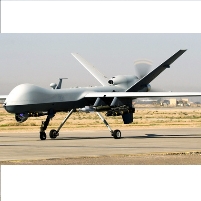Robot Wars Good for Soldiers, Bad for Civilians
 Reaper unmanned aerial vehicle
Reaper unmanned aerial vehicle
The growing use of robots by the U.S. military to reduce battlefield casualties is coming at the expense of civilians, and it could have ramifications as well for the ability of the government to sell future wars to the American people. In 2008, the Defense Department launched 71 unmanned Predator drones in Iraq and Afghanistan—a 94% increase from 2007—to carryout bombing and reconnaissance missions. In addition, the CIA utilized the same drones more than 40 times in Pakistan against Taliban and al Qaeda targets. This growing trend of substituting robots for manned missions is helping to lower deaths and injuries for military personnel, but at the same time it is expanding the number of civilian casualties. British media accounts out of Pakistan claim the use of aerial drones, along with artillery bombing by the local army, has helped drive one million Pakistanis from their homes.
- Top Stories
- Unusual News
- Where is the Money Going?
- Controversies
- U.S. and the World
- Appointments and Resignations
- Latest News
- Musk and Trump Fire Members of Congress
- Trump Calls for Violent Street Demonstrations Against Himself
- Trump Changes Name of Republican Party
- The 2024 Election By the Numbers
- Bashar al-Assad—The Fall of a Rabid AntiSemite






Comments